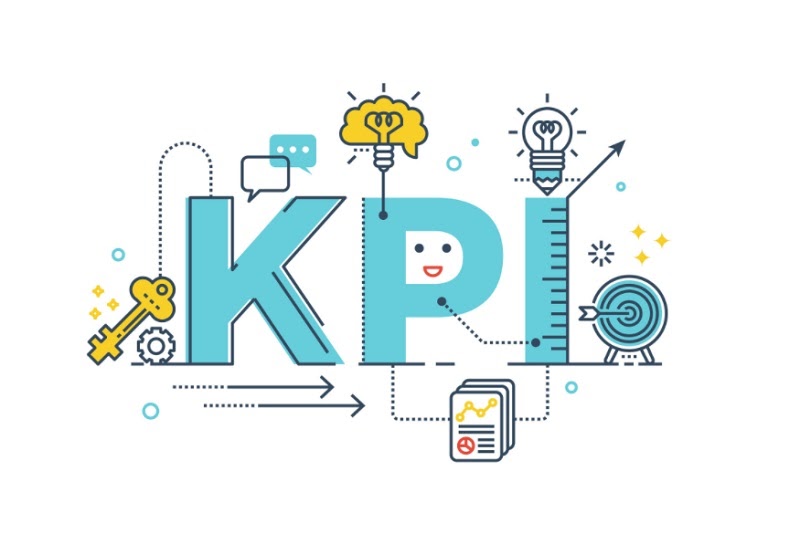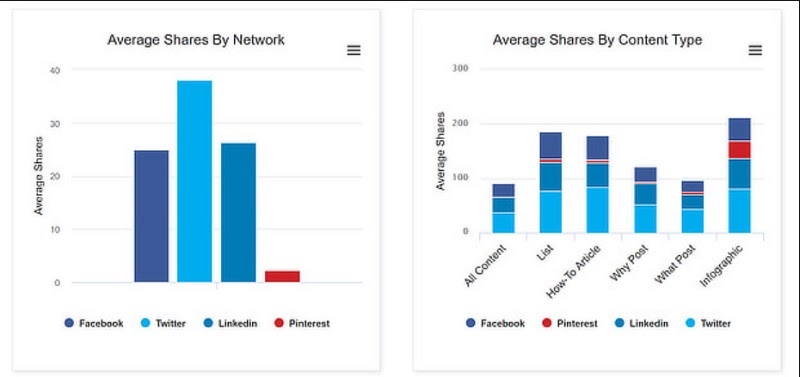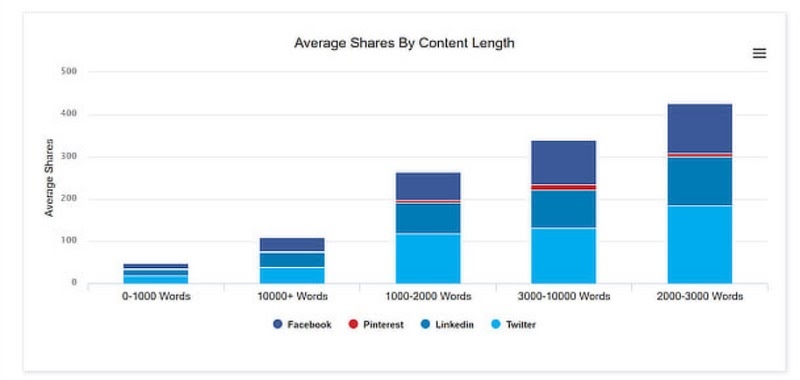
It’s no secret that “Content is King” in marketing. However, in the B2B eCommerce arena, content marketing may be very beneficial. Content marketing is the solution to humanize your business and foster loyalty among your target demographic and consumers. A strong content marketing plan will assist you in generating traffic, establishing trust and authority, supplementing inbound marketing to increase conversion rates, and even assisting in client retention.
With the eCommerce industry’s continued growth, an increasing number of firms are aiming to extend their online stores via a content-focused strategy. Several CMSs (Content Management Systems) are available to assist with this technique. Magento may be included on this list due to its integrated Magento content management system (CMS) functionalities.
In this article, Magezon will help you find out all about Magento content management, its benefits, and types & how to create a successful content marketing strategy for eCommerce businesses.
Table of contents
- Why is Magento Content Management a Great Boon To Your Business?
- 5 Content Marketing Strategies Suggested For Your eCommerce Business
- A definitive guide to establishing a Magento content management strategy
- 1. Identify Your Mission and Goals Of Your Magento Content Management Strategy
- 2. Define Your KPIs of Your Magento Content Management Strategy
- 3. Recognize Your Audience
- 4. Evaluate Your Current Position
- 5. Identify the Most Effective Content Channels
- 6. Select Content Types for Your Magento Content Management Strategy
- 7. Recognize and Distribute Resources
- 8. Create a Calendar for Content
- 9. Produce Content For Magento Content Management Strategy
- 10. Market and Distribute
- 11. Analyze the Results of Magento Content Management Strategy
- Wrapping Up
Why is Magento Content Management a Great Boon To Your Business?

1. Enhances Brand Recognition
Using relevant and engaging content may work wonders for your online exposure and help your audience form a favorable opinion of your business. In addition, many clients create an optimistic view of a brand if the information linked with it is educational and answers all of their questions about the brand.
2. Assists in providing an excellent user experience
If your content can give visitors a good experience, it will generate a positive spin for your business. In addition, potential consumers will learn more about your Magento eCommerce shop by just reading the helpful information you present about your business.
3. Enhances the SEO-friendliness of Your Business
Fresh and high-quality contents are not new and unfamiliar things among eCommerce firms, but Google and major search engines assign significant emphasis to this kind of material. Therefore, if you want your Magento eCommerce store to rank well on Google, you must generate search engine-friendly content that is not only relevant but also extremely useful.
According to eCommerce pros, having a Magento 2 CMS-based website offers a choice of high-value extensions. For example, they enable you to optimize your Magento eCommerce store’s content for Google and other search engines.
5 Content Marketing Strategies Suggested For Your eCommerce Business
1. Blogging

Search engine traffic is highly targeted, persistent and can drive many consumers to your websites. Therefore, what must you do to get Google ranking? Create a blog – even more so if you work in a highly competitive business. While blogging is not a standard feature of Magento, the community actively promotes eCommerce systems that include blogs through Magento extensions.
Blogs are vital components of any Magento content management plan, regardless of the nature of your organization. According to HubSpot, marketers that emphasize blogging have a 13x more significant chance of achieving a positive return on investment. It means that businesses that invest in regular blog content have a much greater chance of converting marketing efforts into revenue.
Your blog serves as a conduit for communication with the outside world. It’s a place to discuss general industry news, highlight product updates, tease new product photos, and take a position for a cause you care about, among other things.
Uncertainty over what to write about is one of company owners’ most significant difficulties. Therefore, to be productive with your blog content marketing, you must undertake keyword research to determine your site’s most relevant search phrases.
The beginning of eCommerce blogging is with keywords
SEMrush and plugins like Keywords Everywhere will provide you with many helpful, SEO-friendly subject suggestions.
Here is the process:
Your audience uses Google to look for solutions to problems. Perhaps they’re even on the lookout for the ideal business-to-business eCommerce service to meet their requirements. Then, you can use the keyword tools to find out what they’re looking for and the specific search phrases they’re using.
Here, intuition is critical. When a member of your audience searches, it is to find an answer to a query. However, they seldom enter the full inquiry into the search area. Therefore, it is up to you to choose relevant keywords and ask yourself, “What question would motivate them to look for this?”
Finally, use the user’s inquiries to generate relevant blog content. As you compose the piece, ensure that you’re speaking the customer’s language – that is, including the terms they use while searching on Google.
This is your best option for creating engaging blog content optimized for organic traffic and designed with your audience in mind.
3 blog post types for every e-Commerce business
Product Post
Whether you concentrate your blog entries on a single product or a series of items makes no difference. The objective is the same — to present your products favorably, emphasize their advantages, demonstrate their application in the real world, and draw attention.
Informative Post
Specific blog postings are intended to educate readers by presenting details on:
- New product releases and service offers.
- Updates about the company
- News from the neighborhood (meetups, events, customer stories)
This form of content is far more concerned with developing a long-term, trusting connection with your audience than it is with generating revenue. However, it is a critical component of a successful Magento content management strategy.
First Person Post
A first-person narrative piece reads more like a tale. And for an e-commerce company, storytelling—whether internal or external—is immensely useful.
For one, creative storytelling helps you organically explain your items’ advantages rather than making a straight sales presentation to your audience. A first-person narrative also allows members of your team to express themselves. It may humanize your brand.
2. Content Upgrades

B2B content has several options for creativity and engagement with prospective clients. Using Content Upgrades in Magento content management is one of the most effective ways to maximize your traffic.
An appealing material that is supplied in return for a user’s email address is a Content Upgrade. The goal is to provide value to users and expand your email list.
Your consumer base is always looking for methods to enhance their enterprises and better use your services and goods. With this information, you may give customers Content Upgrades in the form of lessons, ebooks, expert interviews, and free courses, among other things.
Advice for content upgrades on B2B eCommerce sites
When producing a Content Upgrade, it’s critical to evaluate the sort of content that would be most appealing to your prospective clients. After all, individuals are reluctant about disclosing their email addresses for fear of being inundated with spam. Therefore, your upgrade must entice them to opt-in.
For instance, if you offer building supplies to contractors, you might create a downloadable booklet titled “25 Ideas to Use Used Wood in Your Construction Projects” or “50+ Kitchen Concept Designs to Inspire Your Clients.” You’re adding value to their lives while generating leads for yourself.
Several content upgrade suggestions for B2B eCommerce Magento content management include the following:
- Catalogue of wholesale products available for download
- Opt-in to get access to a complimentary feature on your websites, such as a cost calculator or website audit.
- Access to a free online course on how to properly use your product or service
- Register for a special webinar.
- Download an interview with an industry expert for free.
- A complimentary trial from one of your newly launched items
- White papers, detailed reports, and case studies are available upon request.
To ensure the effectiveness of your Content Upgrade, you must examine what your target audience wants to see. For example, you may do market research to ascertain what people believe your content lacks and then design an update around it. Then create your update, integrate it into your current content, and provide an opt-in. You’ll be developing your email list and producing leads for your eCommerce company in no time.
3. Email Marketing

Do you know that 74% of B2C marketers primarily distribute information through email? While social media is essential, email remains one of the most profitable marketing strategies available. With the right approach and segmentation, you can use your list to generate new and repeat clients. In addition, email marketing is the most secure marketing method.
B2B email lists are more profitable than B2C email lists. This is because your consumers use their professional email accounts regularly, which means you have a good chance of capturing their attention.
Here are a few Magento content management strategies for email marketing that can help you stand out in the inbox and increase your revenue.
Customize Emails
Have you ever filled out a form and had your name misspelled in every communication from that company? Even though it’s all computerized, these errors make you feel unimportant. It’s also why sending emails using “Hey $first name” no longer counts as personalization. Instead, readers want more than just their name in an email.
Consider emails like a relationship. You don’t always start an email with someone’s name. However, you may skip the information if you know it’s relevant to them.
Relevance matters more than ever in email marketing. While readers still like seeing their names at the top of messages, you risk losing interest if you don’t provide engaging content.
Treat your contacts like persons and provide value to everything you send. For example, send them additional information about a product they like. If you can demonstrate to your customers that you care about their needs, you’ll win more devoted consumers’ trust.
Segmentation of mailing lists
Customer segmentation is an important tactic for providing a more customized experience to your customers and prospects. Each user is unique and has unique interests. Therefore, it would be best to get acquainted with your clientele and segment them based on their requirements and interests. Then, you may create emails that are more tailored to each customer group.
To do this, you first need to collect data using a subscription form, a preference management center, or tracking user activity on your website. Then, create highly tailored emails that will strike using this information.
Consider the abandoned cart email here. This is one method for segmenting your email list and boosting sales.

Mobile Optimization
With mobile devices accounting for up to 77 percent of email openings, failing to optimize for mobile means you’re losing out on a significant opportunity.
Numerous companies make basic formatting errors due to utilizing the incorrect tools or being unfamiliar with how to optimize them. For example, if an email is designed with two columns, it will look stacked on a smartphone. This may not influence your email, depending on how you organize your photos and prose, but it often disrupts the momentum of your message.
Additionally, it’s critical to distinguish between desktop and mobile. For example, cellphones have a substantially lower “add to basket” rate than desktops. This implies that if they’re on the phone, you’re not going to close the deal on your website; you’re going to do it by email.
Related article: 7 Types of Effective Magento 2 Follow Up Emails for Sales
4. Influencer Content Marketing
Due to its excellent return on investment, strong influencer engagement rates, and intelligent targeting of online audiences, influencer marketing has established itself as a critical marketing channel for Magento content management strategies. Influencer marketing enables brands to accomplish their objectives by harnessing the authority of influencers via paid endorsements. Indeed, it is one of the most powerful marketing strategies available to eCommerce firms of any size. Numerous eCommerce firms, such as Naked Juice, Glossier, and Audible, have started their brands with remarkable success by working with influencers.

How Is Influencer Content Created?
Influencer Content is any piece of content that leverages an influencer’s endorsement to provide it more legitimacy and – in many instances – reach.
This may be a guest specialist blog post, a YouTube video interview, or even a video advertisement using the Influencer as the brand’s spokesman. By strategically incorporating industry thought leaders into your branded content, you can boost your position to compete with theirs. This increases lead trust and enables you to immediately reach the Influencer’s audience when they distribute the information through their social media networks.
Here are a few Magento content management strategies to help you stand out from your rivals using influencer content marketing.
Perform thorough research to select the appropriate influencers
Influencer marketing’s success depends on the influencer’s connection with their audience. Therefore, companies must engage with influencers that share their values, ideals, and target audience.
Consider a B2B eCommerce shop selling sports equipment to gym operators. One strategy for generating user interest is to reach out to well-known personalities in the fitness sector. For instance, bodybuilders, prominent athletes, and successful gym owners may promote their equipment, establishing them as the top eCommerce fitness merchant in the business.
Plan the size of the following
Another factor to consider is the magnitude of the following. Bigger isn’t necessarily better, and quality frequently trumps quantity. It all relies on your approach and aims.
The huge mega-influencers have undeniable reach. However, many people have developed unsavory images because they only promote products without benefiting their followers. This has significantly harmed the influencer model’s trust component and shown us that the size has a tipping point and that ROI at all levels is worth considering.
Small specialized players with just a few hundred followers often have a strong community around them. That means giving them free things to trial and may significantly influence them. On the other hand, a firm would have to pay for huge influencers with millions of followers.
Continue to create long-term relationships built on collaborative trust
Finally, you must have faith in the influencer you chose to represent your brand and shopping experience. An influencer is accountable for avoiding mistakenly including anything in their posts that contradicts your brand message. For example, if Chicco strollers employ Davis, it is evident in her postings that she drives a Nuna Baby stroller, the authenticity of her posts is compromised. They should feel comfortable leading you in design, platform selection, and audience selection. They should produce content that seems attractive to their audience while retaining their audience’s focus on your brand.
5. Ebooks and Guides For Free

Your clients are not just looking to purchase a product. Instead, they’ve come to you to use your goods to accomplish a purpose.
Whether you’re selling gadgets, supplements, apparel, or food, you’re selling directly to companies who see your items as a means to an end, not the goal in and of themselves. This offers you an unbelievable amount of space to produce recommendations on proper use, store, acquire, and even profitably sell your things.
As a content marketing suggestion, instead of creating separate product guides, you could develop a free guide or booklet that assists them in achieving their one main objective.
For instance, if your firm sells HVAC systems to companies, you might publish a guide titled “How to Keep Your Workplace Cool This Summer” under the name of your brand. The vast majority of your leads and clients will gladly download it. If you demand an email address from the information to download the guide, you may sell to them in the long term using the email technique described in the first section.
A definitive guide to establishing a Magento content management strategy

Whether you’re new to content marketing or have been using the same technique for some time, it never hurts to update your Magento content management strategy plan. Don’t forget to ensure that it’s current, original, and engaging for your leads and consumers – regardless of when or how they intend to purchase.
Long-term planning enables you to concentrate on your business’s objectives, foresee obstacles, and manage resources efficiently. You may build and execute a comprehensive content strategy plan in stages by outlining these eleven steps.
1. Identify Your Mission and Goals Of Your Magento Content Management Strategy
Establishing a content marketing core mission is excellent to start when developing your Magento content management strategy plan. This is a brief statement that helps you concentrate on what matters – and what does not – while creating content, ensuring that your content marketing plan remains on track.
A mission statement for content marketing contains the following:
- Who is your intended audience?
- The stuff that you’ll utilize to communicate with them
- The advantage they will get
To develop a mission statement for your firm, use the following formula:
We supply [target audience] with [kind of content] to assist them in accomplishing [business objectives].
While the mission statement focuses on the benefits your audiences will get from your content marketing approach; you should also consider the benefits to your organization. That is where your company objectives come into play.
Typical objectives include the following:
- Enhancing income using your Magento content management plan
- Increasing sales and acquiring more high-quality leads can assist you in meeting your income targets.
- Increasing visitors to your site, since the more traffic there is, the more opportunities to accomplish your other objectives.
- Improving your business’s impression so that you earn influence and authority and are recognized as a thought leader.
- SEO success results in increased traffic.
- Reduced marketing expenditures as a result of your content’s greater efficacy
- Engagement on social media may assist with both authority and traffic.
Once you’ve established your objectives, the following stage is to take action.
2. Define Your KPIs of Your Magento Content Management Strategy

The most effective method to accomplish objectives is to make them explicit and quantifiable. This entails defining your Magento content management strategy’s key performance indicators (KPIs).
The KPIs will assist you in determining when you have met your objectives by offering checkable milestones. They’ll cover your income, sales, traffic, SEO, and many facets of digital marketing, such as email marketing and social media stats.
→ Read more: 50+ Top Ecommerce KPIs to track in 2021
Typically, they will be identified by a unique number. For instance, you may want to:
- Attain a certain revenue goal for the year, quarter, or month
- Increase your lead magnet signups as an indication that you’re generating more high-quality leads
- Increase the number of new email subscribers by a specified amount
- Increased traffic and interaction with your website’s content
- Enhance the search engine rankings of some of your most important sites to help increase visitors
- Obtained a certain amount of shares, mentions, and comments on your pillar content.
- Be asked to participate in certain industry-related events
Additionally, you’ll want to monitor marketing expenses, monitor your spending on various initiatives, and check up on the cost of collecting leads and closing sales.
3. Recognize Your Audience

A successful Magento content management plan requires an understanding of your audience to generate content relevant to them. There are three steps that you must take.
#Step 1: Collect Demographic Information
The first step is to gather demographic information on your email subscribers, website visitors, and social media followers.
Social media analytics, web analytics, and email subscriber analytics all provide valuable information about your audience: Age/Sex/Education/Income.
You’ll also learn about their primary interests. In Google Analytics, go to Audience » Interests » Overview to see this information. You’ll be able to discover which market categories your website visitors belong to.
Similar information may be found on social networking platforms. For example, Facebook Page Insights may provide you with demographic information on your Facebook fans. You may also utilize Twitter analytics to get demographic information about your Twitter followers.

#Step 2: Obtain Customer Feedback
Collect comments from your present customers to learn more about your target demographic. This will provide you with information about:
- What people think of the stuff you’re presently creating
- What their most pressing requirements are
- How your content may help them solve their difficulties
Obtaining the correct consumer feedback may assist you in the following ways:
- Recognize your readers’ and subscribers’ priorities.
- Choose the finest locations to reach your consumers (see step 9)
- Fill up your customer profile, which we’ll go over next.
You may want to construct a survey using Magento 2 Form Builder to gather consumer feedback effortlessly. Magento 2 Form’s drag-and-drop builder simplifies the process of personalizing your survey. This extension also includes all needed features for creating powerful forms easily.
#Step 3: Establish Buyer Personas
When demographic data and consumer comments are available, buyer personas may be created or enhanced. Buyer personas sometimes called customer avatars, characterize your ideal readers and consumers to target content better.
The most efficient customer personas include information about your customers’ pain spots, difficulties, information sources, and behavioral motivators.
When you have a firm grasp on all of this, you will have a more excellent knowledge of the kind of information that will elicit a response from your audience and how it will benefit them. Finally, what will pique their interest?
4. Evaluate Your Current Position

Numerous firms already have content available online. This includes content on your blog and content on social media, podcasts, and videos.
That is why the next step of the Magento content management strategy is to determine if the content is assisting you in achieving your objectives. If you’re starting and have no content, proceed to Step 5 – Identify the Most Effective Content Channels.
To do this, you’ll need to conduct a content audit. That is to say:
- Keeping track of all content items, such as blog entries, guest posts, and so on
- Evaluating their value or success
- Identifying inconsistencies
How to Keep Track of Your Content
Screaming Frog is an excellent place to start if you want to track all the content on your blog or website. It is a URL crawler that will list URLs, evaluate page titles and descriptions, identify duplicate pages, and generate sitemaps.
The free version of the application scans up to 500 URLs. Additionally, you may use this tool for competitive research by doing the same kind of analysis on the content of your rivals.
Moreover, you may want to track your content with SEMRush’s Content Auditor. To begin, create a project and choose the area of your site to audit, for example, your blog. Next, select the URLs you want to audit and click the Start Content Audit button. And then, you’ll get a comprehensive analysis of your content, which will include the following:
- Titles and descriptions of contents
- Length of content
- Backlinks
- Social responsibilities
Exporting the data results in creating a basic spreadsheet containing all of the URLs.
Analyze the Effectiveness of Your Content
Following that, it’s time to evaluate the content’s usefulness. You’ll be searching for metrics such as the following:
- Whether the content has a high number of inbound links
- How well-positioned that piece of content is in search engines for the keywords linked with it
- If the content is extensively distributed,
You’ll find some of this information in the SEMRush report above. Still, you can also get more information by using other SEMRush features, like the site audit and position monitoring tools.
This will inform you:
- Which pieces of content are so successful that they do not need modification
- Which ones might be improved or updated to achieve your objectives better
- Which ones should be eliminated or replaced
Determine Content Gaps
Finally, determine the holes you can exploit. These may include the following:
- Keywords associated with your topic that your content does not target
- You are not responding to the questions your target audience is asking
- Content ranking well but might be modified, for example, to target Google’s response boxes. These boxes display the above search results and include information about a particular subject.
Ahrefs can be used to do a content gap analysis. To do so, go to Organic search » Gap in content. Include the domain names of your primary rivals under Indicate the keywords for which the following are ranked. Add your domain to the list. However, the following aim is not rated. Select the Show keywords option.
5. Identify the Most Effective Content Channels

As you go through this process, you’ll have a better understanding of where your audience congregates online and where you already have a solid online presence. It is preferable to concentrate on what works and develop from there rather than achieve everything at once.
However, to be specific, you should revisit site analytics. In Google Analytics, go to Acquisition » Social » Overview to examine the primary social media platforms where your content is shared. For instance, in our snapshot, most social engagement occurs on YouTube.
Additionally, you can use Buzzsumo to locate comparable data. To use their Content Analysis tool, go to their website and put your domain name into the on-screen search box. When you press enter, you’ll see the following charts:
- Distributed shares via network
- Distributions by kind of content
- Distributions according to the duration of the content
- The year’s most popular content

Additionally, you may tweak your search keywords for greater specificity. With this data, you can quickly choose which networks to target to increase your content’s social media engagement and shareability.
6. Select Content Types for Your Magento Content Management Strategy
Following that, consider the sorts of content you’ll need to develop. Each Magento content management plan will incorporate specific categories of content.
Most effective Magento content marketing plans begin with a core of information published on your site/home base that can subsequently be reused and shared on other sites (outposts).
Thus, blog postings remain a critical component of your Magento content management strategy and continue to generate good returns. Your blog postings should ideally be actionable, helpful, and shareable and should include a variety of article kinds.
How to Use Buzzsumo to Map Content to Social Media
You may use the Buzzsumo tool to match the sorts of blog entries you wish to write to their potential for social sharing, which will help you increase engagement and reach.
Of course, developing a good Magento 2 content marketing plan is more than simply staring at your own website’s statistics. Additionally, it’s about discovering what other successful content exists that you may use as inspiration. Buzzsumo may also assist with this.
Type your subject into the search box of the same tool. You’ll see data about sharing from throughout the web. For instance, one figure indicates that long-form content is quite popular in content marketing:

In addition, there is information on the most popular websites that publish on this subject and the most famous pieces of content that relate to it.
Other Types of Content
What more content should your Magento content management strategy plan include? As some research demonstrates, video marketing should be a critical component of any marketing strategy, as it has been shown to engage visitors, keep them on your site longer, increase lead generation, and decrease abandonment. Additionally, you’ll want to include different visual content to boost engagement.
Consider developing infographics using tools like Piktochart and Canva and employing Canva and comparable platforms to generate unique visuals and memes for social sharing.
Other contents to increase lead generation are lead magnets such as ebooks, webinars, checklists, and worksheets. Additionally, it’s worth considering podcasting as a content distribution channel since over 40% of Americans currently listen to podcasts.
The next stage determines what contents you will need to generate that content.
7. Recognize and Distribute Resources
Now that you’ve determined the sort of content you’re going to generate, who you’re going to share it with, and where you’re going to share it. It’s critical to ensure you have everything you need to successfully execute your Magento 2 content marketing strategy. This entails responding to queries such as:
- Who is responsible for creating and maintaining content?
- What tools and resources, whether human, physical, or digital, do you need to generate the content?
- How will your publishing process, including content scheduling, be structured?
- Consider each of them in further depth.
Who Is Responsible for Content Creation?
This is a question concerning assigning positions. First, you’ll need to decide who is in charge of the overall project and accountable for providing particular content pieces.
This may vary depending on the size of your firm and content staff, as well as whether you’re producing content in-house or outsourcing.
A possible illustration of this might be as follows:
- The chief executive officer or marketing officer has ultimate approval authority over content and content strategy.
- Your content marketing manager is in charge of the day-to-day execution of your Magento content management strategy, collaborating with the content team.
- Individuals will contribute content based on their areas of expertise.
Which Tools and Resources Are Required?
Then, decide how you’re going to develop the content. For example, your content creators may include the following:
- Content creators on-staff
- Professionals with expertise in podcasting, video production, or graphic design
- Freelancers

One approach to rapidly identifying excellent freelancers is returning to your Buzzsumo search results and discovering who wrote the most popular content. There is no harm in contacting them and asking if they would consider joining your content team. In addition, you may locate excellent freelance content creators via networks such as NDash, Contently, and ClearVoice.
Additionally, you’ll want equipment for podcasting and generating professional films, as well as hosting on sites such as YouTube, Spreaker, Vimeo, and Blubrry.
Following that, determine your content development method. For instance, to write a standard blog post, you may need to:
- Create an outline and get approval for it
- Create the article
- Create supplemental images
- Submit the article to the editor
- Make any necessary modifications
- Upload
- Publish
There is one more need to do before you begin researching and developing content: making a content calendar to track what will be released. So that is the next stage.
8. Create a Calendar for Content

As part of your Magento content management strategy, you’ll need to determine the precise timing of your content’s publication on each of the platforms you want to employ.
Since a lack of preparation is a shared content marketing blunder, it is critical to use a content calendar to schedule all of your content. This may be accomplished in several different ways.
For instance, you may use Google Calendar to keep track of the due dates for individual pieces of content. That works reasonably well, mainly if you do not post much stuff.
While this is the simplest way, if you’re publishing a lot of content and managing a content team as well as the production pipeline you’ve chosen, you’ll undoubtedly want some additional capabilities. One strategy to generate content for the calendar is to do preliminary research to see which themes would resonate with your audience.
To do this, you may use a productivity and task management tool such as Asana or a purpose-built editorial calendar platform such as CoSchedule. These features enable you to plan certain stages of the content development process.
9. Produce Content For Magento Content Management Strategy
As you can see, there is a great deal of preparation involved in developing a piece of content for your Magento content management plan. However, the moment has arrived to do so.
You’ll have an idea of the sort of blog post to write based on the research you’ve previously conducted. It’s now time to choose a title from the content schedule and get started.
Conduct Research on Your Content
When you’re prepared to write, you’ll need to ascertain the following:
- What is currently available
- How your fresh content may increase your audience’s value
This entails doing a Google search, examining the most popular information on your subject, and determining how you might improve upon it. This is referred to as the skyscraper method.
Original research also performs well, so consider it if you’re gathering the appropriate data. Include keyword research to determine the most important phrases to employ for enhanced SEO and search ranking.
Produce Content
Finally, begin writing or developing content for your website. At this stage, you’ll need to consider how to incorporate the personality of your business into the content you produce.
You may choose to seem very professional, extremely casual, or something in between. Additionally, you’ll need to strike a balance between demonstrating your experience and seeming condescending to your audience.
→ Read more: The Complete Magento 2 SEO Checklist and Guide
10. Market and Distribute
Distribution and marketing are the following critical components of any Magento content management strategy. You will not get the desired outcomes unless things are handled correctly. For instance, you are likely to:
- Establish a plan for publishing your content on social media, both instantly and through a drip campaign using a platform like Missinglettr
- Distribute your content to subscribers using email marketing
- Notify any influencers referenced in your content to help spread the word
11. Analyze the Results of Magento Content Management Strategy

Finally, it’s time to evaluate your Magento content management strategy’s performance. To do so, you’ll revisit the key performance indicators (KPIs) you established at the outset of the content strategy plan to determine what has changed and if you’re meeting your objectives.
To do this, you can:
- Analyze your content’s performance using Google Analytics, as explained before
- Use Buzzsumo and other social analytics tools to track social sharing activities
- Analyze the performance of your marketing initiatives with OptinMonster’s conversion statistics dashboard
Google Alerts and Mention are two other ways of measuring content marketing performance. Both of these tools will help you determine if your content is being cited and shared, therefore assisting you in meeting your awareness and engagement KPIs.
Tools such as SEMRush may assist you in determining the key performance indicators (KPIs) for your content’s search rank. Additionally, you’ll be able to monitor email signups using your email marketing software’s statistics.
By tracking your results, you’ll be able to adjust your content marketing approach regularly, ensuring that it’s constantly current.
That’s all! You now understand how to develop an effective Magento content management strategy from start to finish.
Wrapping Up
If you’ve read this far, it indicates that you’re committed to your Magento content management content strategy. This is excellent since you know that dedication and consistency are two of the most critical characteristics that contribute to success in this field. Hopefully, the information and steps discussed in this tutorial will become a significant part of your content strategy!
At Magezon, we provide a feature-rich content builder suit that helps Magento merchants build high-converting, comprehensive e-stores just by dragging and dropping. Visit Magezon to explore what this suit can do for you.

Optimize Your Magento Store With Powerful Extensions
Looking for fast, efficient and well-coded extensions to build or optimize your Magento stores for sales boosting? Then visit Magezon website and grab necessary add-ons for yours today!
 Magezon Blog Help Merchants Build Comprehensive eCommerce Websites
Magezon Blog Help Merchants Build Comprehensive eCommerce Websites

